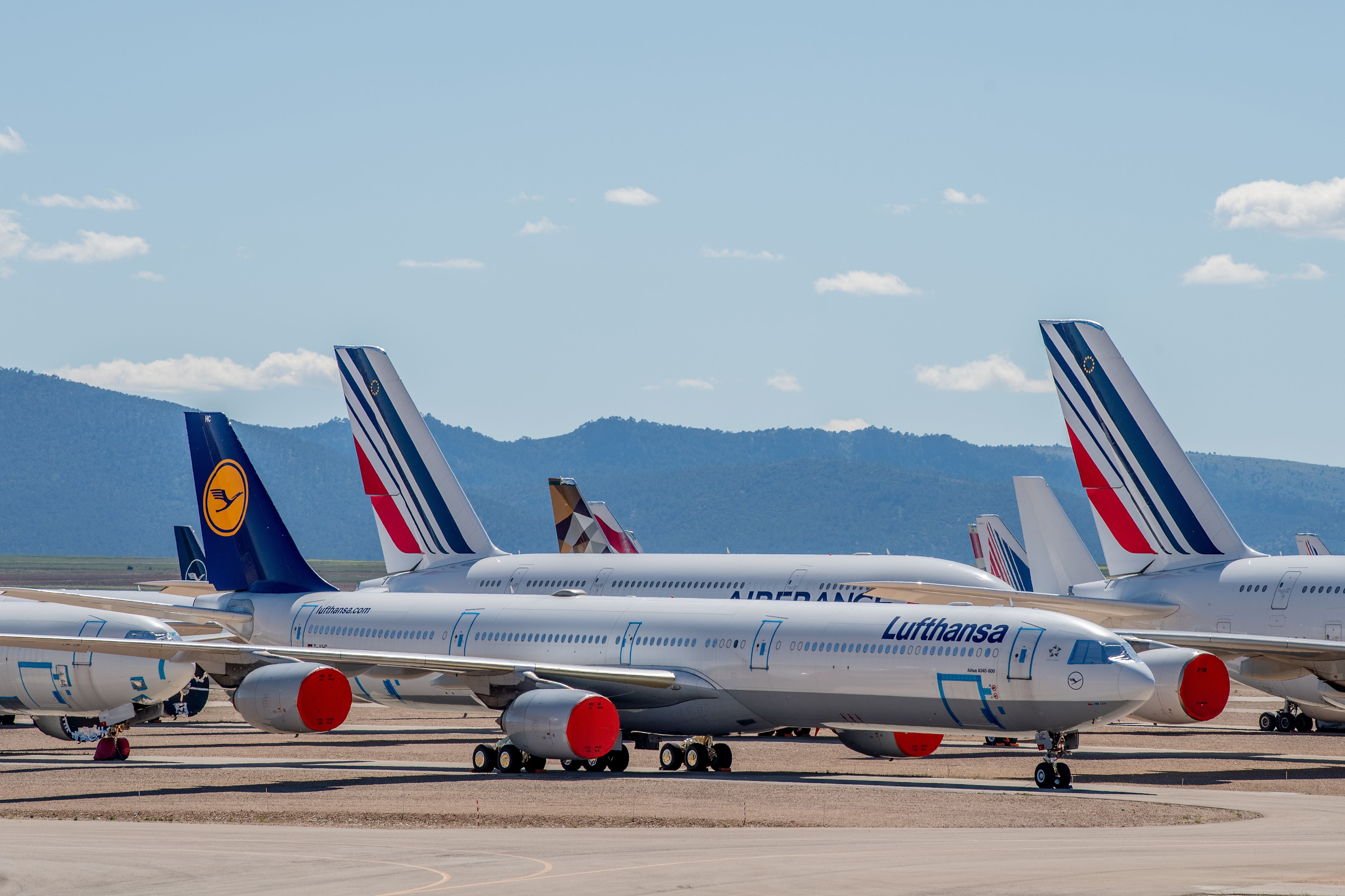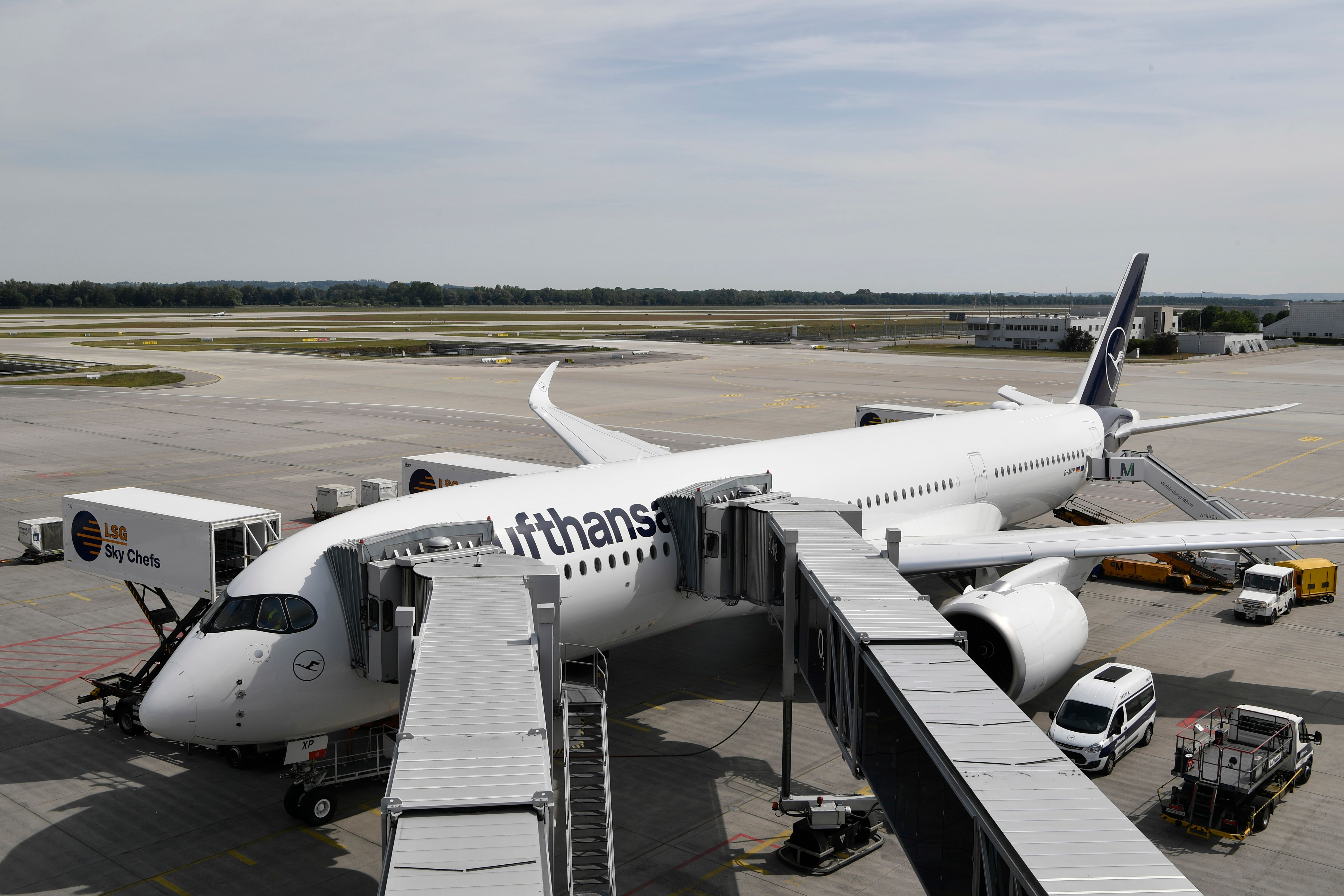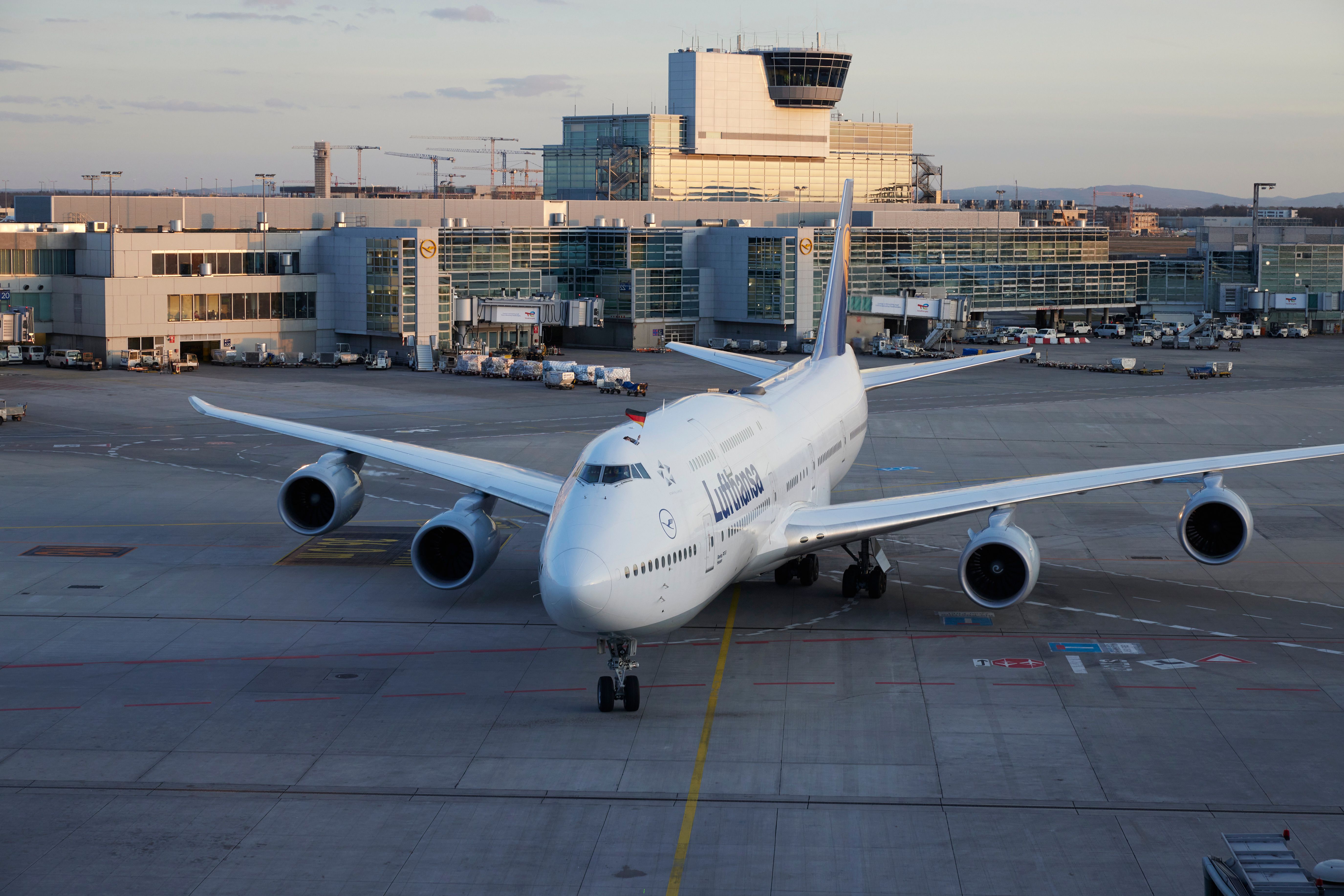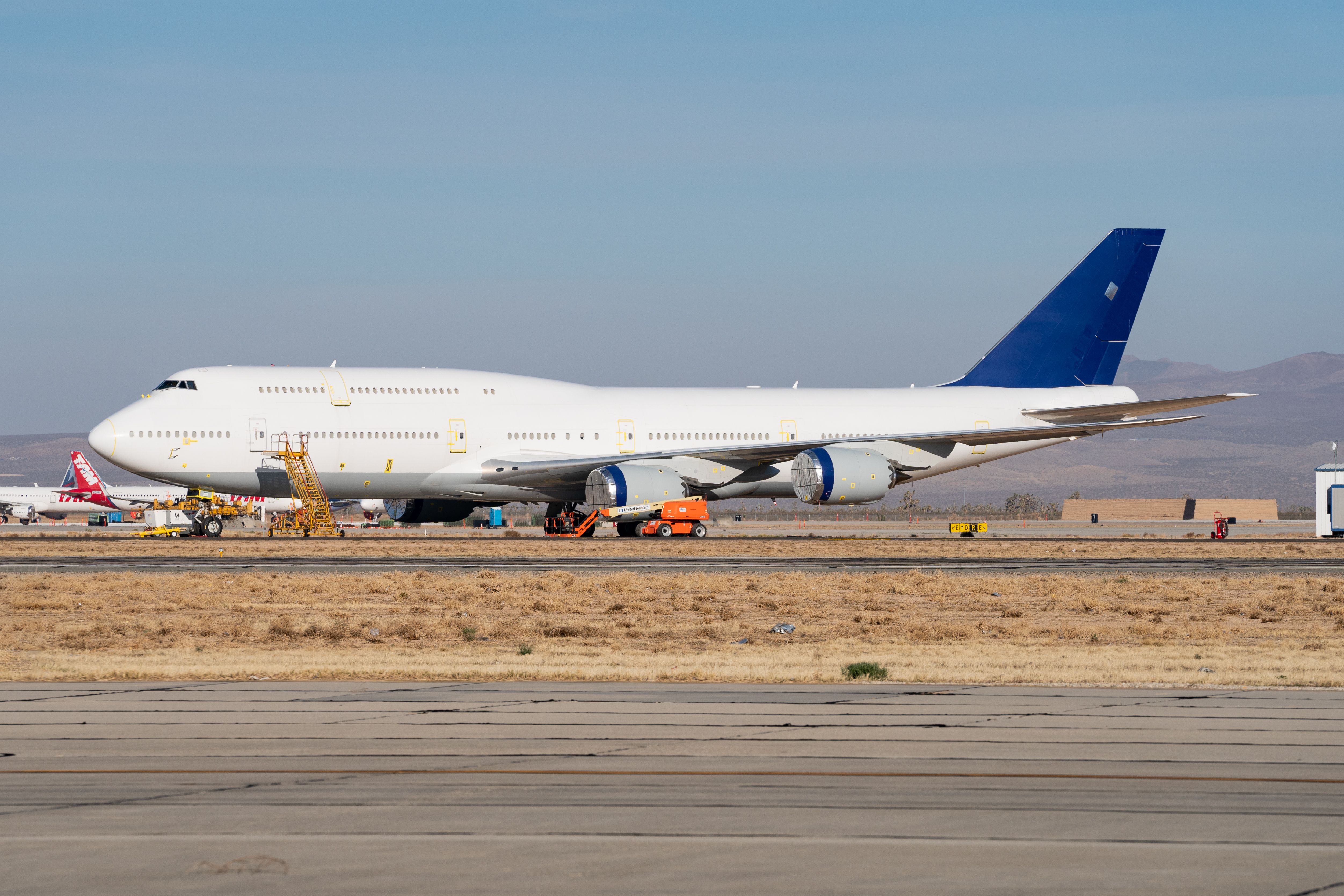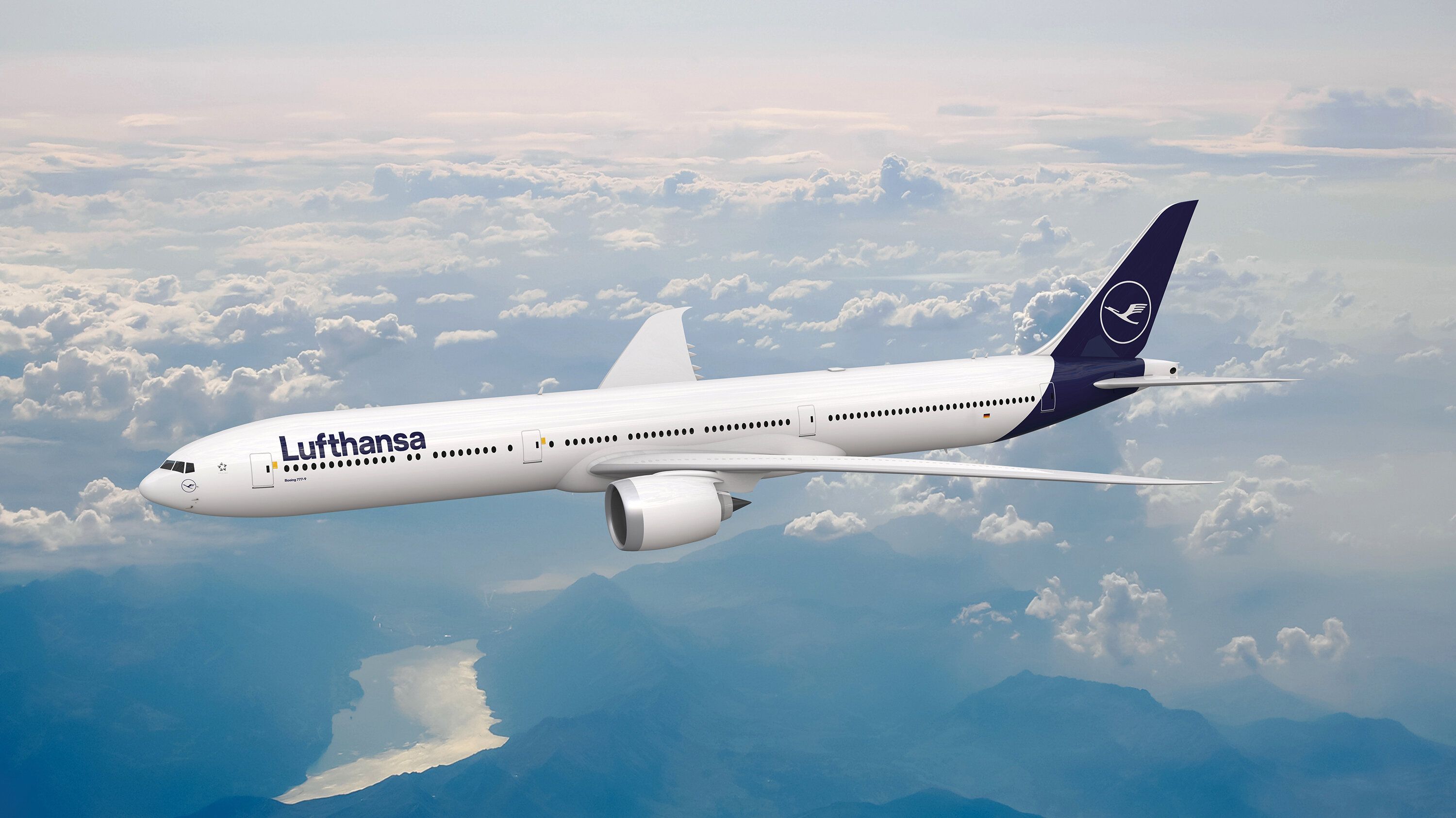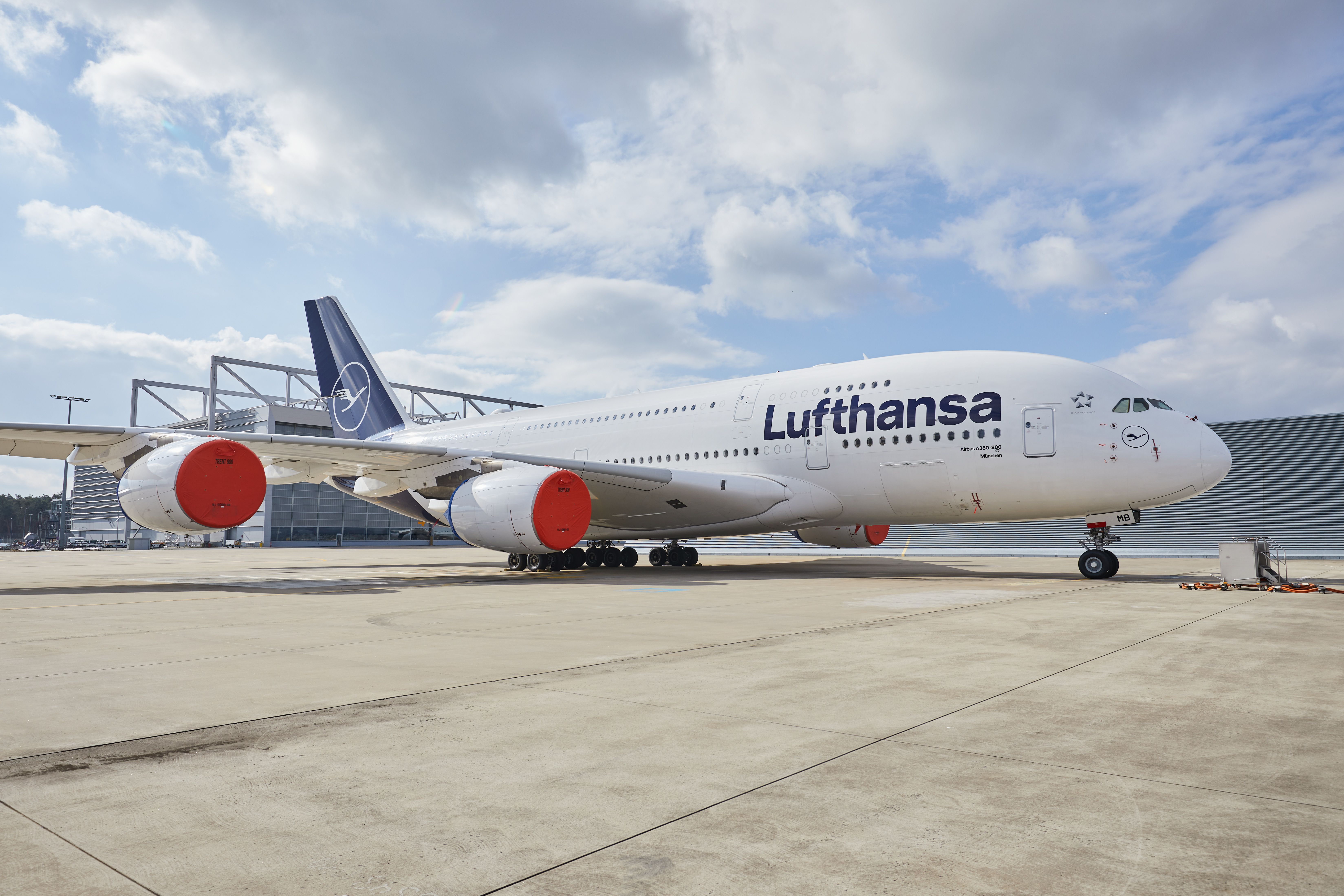The last two years have been a rollercoaster ride for Lufthansa’s fleet. The carrier has well over 250 aircraft in its mainline fleet and is notably one of the few legacy network airlines still flying the Boeing 747 and Airbus A340. Sadly, Lufthansa said goodbye to all 14 of its Airbus A380s, completely abandoning the type due to the pandemic. However, the airline will be welcoming the Boeing 787 Dreamliner into its operations soon- further diversifying an already diverse fleet. In this article, let’s take an in-depth look at Lufthansa’s collection of aircraft in 2022 and what we can expect to see in the coming months and years.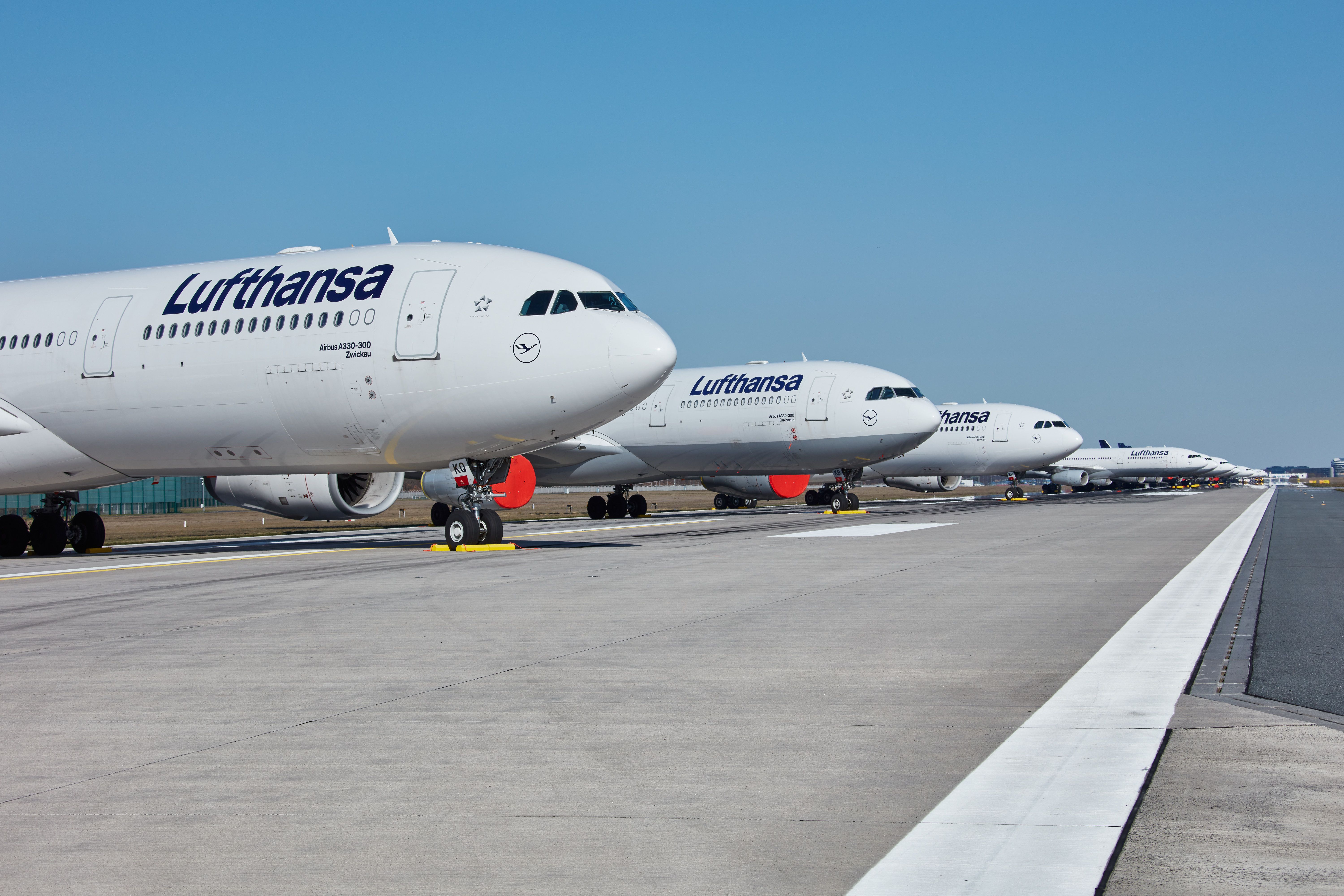
The Airbus A319-100
Let's first take a look at the composition of the airline's fleet aircraft-by-aircraft, with data coming from Planespotters.net.
Starting with Airbus jets, the carrier has 26 A319-100s with an average age of about 20 years. This quantity has remained fairly stable over the last few years. Four A319s left mainline operations in 2019, with three of these still active with the carrier’s regional subsidiary Lufthansa CityLine.
The fourth A319, registration D-AILR was written off. This was due to an incident involving portable steps colliding with this jet’s rear tail-cone in July of 2019 at Frankfurt. Lufthansa marked it as ‘damaged beyond repair’ and said goodbye to the aircraft.
Airbus A320s and A321s
Moving up, the German carrier has a whopping 83 Airbus A320s. This divides into 53 A320-200s and 30 A320neos. The -200s have an average age of about 9 years while the neos average about three and a half years.
2020 was a big year for changes to the A320-200 fleet. Prompted by the pandemic, Lufthansa stored 14 in early and mid-March. These aircraft have mostly either been scrapped or remain in storage- although the jet once registered D-AIPF had its cockpit section preserved. This section of the jet is in Munich, Germany at the Deutsches Museum.
Since the worst of the pandemic, Lufthansa has moved an additional six A320-200s out of its fleet and over to fellow Group airline, Eurowings Discover.
When it comes to the stretched A321, Lufthansa has 63 A321ceos and 14 neos. The ceos subdivide into 20 -100s (which have an average age of about 27 years), and 43 -200s, which average about 13 years. Interestingly, just one A321ceo has left the Lufthansa fleet. Still flying, the jet registered D-AISE now serves the German Air Force. The A321neos average one and a half years of age, with Lufthansa continuing to take more of these next-generation aircraft. Five neos arrived in 2021 and, at the time of this article’s publication, three have been delivered in 2022.
Lufthansa’s A320 and A321neos are part of a massive series of orders placed by parent company Lufthansa Group. This began back in 2011 with 30 neos ordered for Lufthansa. However, 2013 and 2018 saw additional orders for neo jets. By 2018, 149 A320neo family aircraft had been ordered. These will not only modernize Lufthansa’s short and medium-haul fleet, but also that of fellow group airline SWISS.
Airbus A330s and A340s
Now moving to widebody Airbus jets, Lufthansa has 13 A330-300s with an average age of just under 14 years. In 2018 and 2019, three of Lufthansa’s A330-300s were moved over to fellow Group carrier Brussels Airlines. The carrier also said goodbye to two in 2021 and (so far) one in 2022. These three A330s have gone to the Eurowings Discover fleet, where they still fly regular commercial service.
Moving up to the A340s, the carrier has 17 A340-300s with an average age of 22 and a half years, and also five A340-600s, which average 15 years of age.
While many airlines around the world have since retired their A340s, Lufthansa- and fellow group airline SWISS- have continued to operate the type.
Most interesting is the A340-600’s pandemic-forced move to long-term storage and recent revival. As of mid-March, all five of the jets have left the Spanish storage facility at Teruel and are on their way to resuming operations. As we’ve noted before, the return of the Airbus A340-600 to service is only temporary and not a long-term move. That’s because the airline has fewer first-class equipped aircraft than it wants. Offering a solution are the airline’s A340-600s, which have a first class cabin of eight seats.
This temporary move will come to an end when the airline takes delivery of A350-900s equipped with a first-class cabin. The first of these is due to be delivered in July 2023.
Lufthansa plans to operate a one-in-one-out policy, meaning that each time an Airbus A350-900 with first class arrives, an A340-600 will be retired.
Airbus A350
Lufthansa currently has 20 of the A350-900 in the fleet. At an average age of about four years, the airline took delivery of its first A350 back at the end of 2016. Deliveries have been steady since then, with the airline taking delivery of one at the end of 2021 and two already this year. Data from ch-aviation indicates that the airline has about 30 more A350s yet to be delivered.
The German carrier is indeed a huge fan of the A350- adding more of the type than what it has ordered directly with Airbus. In October of 2021, we reported that the airline made moves to add four leased A350s to its fleet.
This love of the A350 may present an opportunity for Airbus - as the European planemaker likely needs to find new homes for the jets ordered by Russian carrier Aeroflot. Due to Russia’s invasion of Ukraine and subsequent sanctions, Airbus promptly halted deliveries of the A350 to Aeroflot. Indeed, several have already been moved to storage.
In early March, media sources had reported that Lufthansa Group was considering acquiring or leasing the aircraft that were originally destined for now-sanctioned Russian airlines. This includes undelivered A350s destined for Aeroflot- but also Boeing 777 freighters that were due to go to Russian air cargo group Volga-Dnepr Airlines.
Boeing 747-400 and Boeing 747-8
Turning to Lufthansa’s collection of Boeing aircraft, this is a much, much smaller portion of the Star Alliance member’s collection. But, it still presents some fairly interesting information.
When it comes to the mighty Boeing 747, Lufthansa operates 27: 19 of these are the 747-8i, which have an average age of eight and a half years. These fly alongside eight older 747-400s, which have an average age of 22 years. Lufthansa has been steadily retiring its Boeing 747-400s over the past decade. Indeed, the airline has retired a handful every year since 2011. Again, the pandemic forced the airline to retire some of these aircraft slightly ahead of schedule. While one was retired in January of 2020, four were sent to long-term storage in March and April of that year and have remained there ever since.
The remaining 747-400s are currently being deployed to a short list of destinations which include New York, Chicago, Delhi, Dubai, Beijing, and Rio de Janeiro.
When it comes to the 747-8i, Lufthansa is in fact one of just three commercial airlines that ordered the newest passenger 747 variant from Boeing. The two other operators are Korean Air and Air China. The airline has 19 in the fleet, with the first of these being delivered back in April of 2012. The last 747-8 to be delivered arrived at the airline in April 2015.
Lufthansa's never-delivered 20th 747-8
Lufthansa actually ordered 20 747-8i jets back in 2006. According to the original press release from Boeing, the Lufthansa order had an average list-price value of $5.5 billion, and was initially scheduled for delivery beginning in 2010. So, with 20 ordered and 19 now flying with the airline, what happened to the 20th?
Well, somewhere along the way, it seems as though Lufthansa decided not to take delivery of the jet. This particular jet had already been built and painted for Lufthansa and even had a German registration number- D-ABYE. Temporarily re-registered to N828BA, Boeing eventually found a new customer for the jumbo jet.
In September of 2021, it was reported that the aircraft would fly for the Egyptian government. Re-registered as SU-EGY, there has been much speculation that the aircraft is set to replace Egypt’s current presidential jet, which is an Airbus A340-200. Planespotters.net currently has this aircraft listed as parked and in quote-unquote ‘storage.’ Listed as having flown to Hamburg for cabin-outfitting in November 2021, the length of time it has spent out of service would be a strong indication that it is being modified for VIP service. Lufthansa Technik- which has a VIP Services division- is based in Hamburg.
It’s somewhat amusing to see that the aircraft, ordered and then abandoned by Lufthansa, is likely getting modification work completed by Lufthansa group subsidiary, Lufthansa Technik.
Lufthansa's future fleet
The German carrier has 25 units of the popular widebody on order and has its eyes on transatlantic adventures with the type this year.
Now technically, at the time of this article’s publication, the aircraft has yet to begin service for Lufthansa. However, we have already had a brief glimpse of the airline’s first jet as it was rolled out of Boeing facilities in February, in Charleston, South Carolina.
Assigned registration D-ABPE, this first jet is earmarked for service to Toronto, Canada. Initially expected to arrive at the airline for Christmas 2021, the carrier conceded that a 2022 delivery would be more realistic following industry challenges, including FAA restrictions. With the current lack of clarity and certainty around when Boeing might resume delivery of its Dreamliners, it’s up to the FAA to decide when Lufthansa will actually get its first 787.
Lufthansa also has another new Boeing type on order in the form of the 777X- or more specifically, the 777-9. Ch-aviation data indicates that the airline is expecting 21 of these aircraft. The airline in 2020 noted that it was confident of an initial delivery in 2021- but clearly Boeing has missed this deadline. However, the delays are not exactly bad news for Lufthansa.
Unlike Emirates President Sir Tim Clark, who is unhappy with the multi-year delay, Lufthansa CEO Carsten Spohr apparently doesn’t mind that the 777X program is behind schedule.
On the upcoming jet, Spohr was reported as saying:
"We stand by our 777-9 orders... We think it is the right aircraft for us, especially now that it is coming later.”
In November 2021, Lufthansa made the news for expressing interest in the then-rumored 777X freighter. Likely destined for Lufthansa Cargo, the airline group has yet to make any clear moves concerning the new Boeing offering- which was made official in January of 2022.
Gone but not forgotten: The A380
While Lufthansa has firmly said goodbye to its Airbus A380s, this article would seem incomplete without mentioning the superjumbo. All 14 of Lufthansa’s A380s were put into storage over March and April of 2020. Initially, these jets were parked at Lufthansa’s hub in Frankfurt. However, one by one, the jets were ferried into long-term storage.
It was in September 2021 that Lufthansa fully bid farewell to the giant Airbus A380, likely for the final time. The last of 14 jets departed Frankfurt, joining the entire fleet in storage with Tarmac Aerosave. Two of Lufthansa’s A380s are in Tarbes, France, with the remaining 12 in Teruel, Spain. Both sites are capable of scrapping aircraft, with several ex-Singapore Airlines A380s already getting scrapped at Tarbes.
The oldest of the ex-Lufthansa A380s were delivered to the airline in 2010 while the newest of these joined Lufthansa in 2015, making the youngest just seven years old. While rumors have surfaced occasionally that the jets would eventually return, the airline’s CEO, Carsten Spohr, has firmly denied an A380-comeback.
Slowly moving towards modern twinjets
So, as you can see, Lufthansa has a massive collection of aircraft which is extremely diverse. These range from the new and efficient A320 and A321neo all the way up to the rare Airbus A340-600.
While the airline will eventually follow the trend of replacing its quadjets with next-generation twins, the carrier remains one of the few in the world where you’ll still be able to fly a Boeing 747 or Airbus A340.
Which Lufthansa aircraft have you flown on? And which one is your favorite? Let us know by leaving a comment.

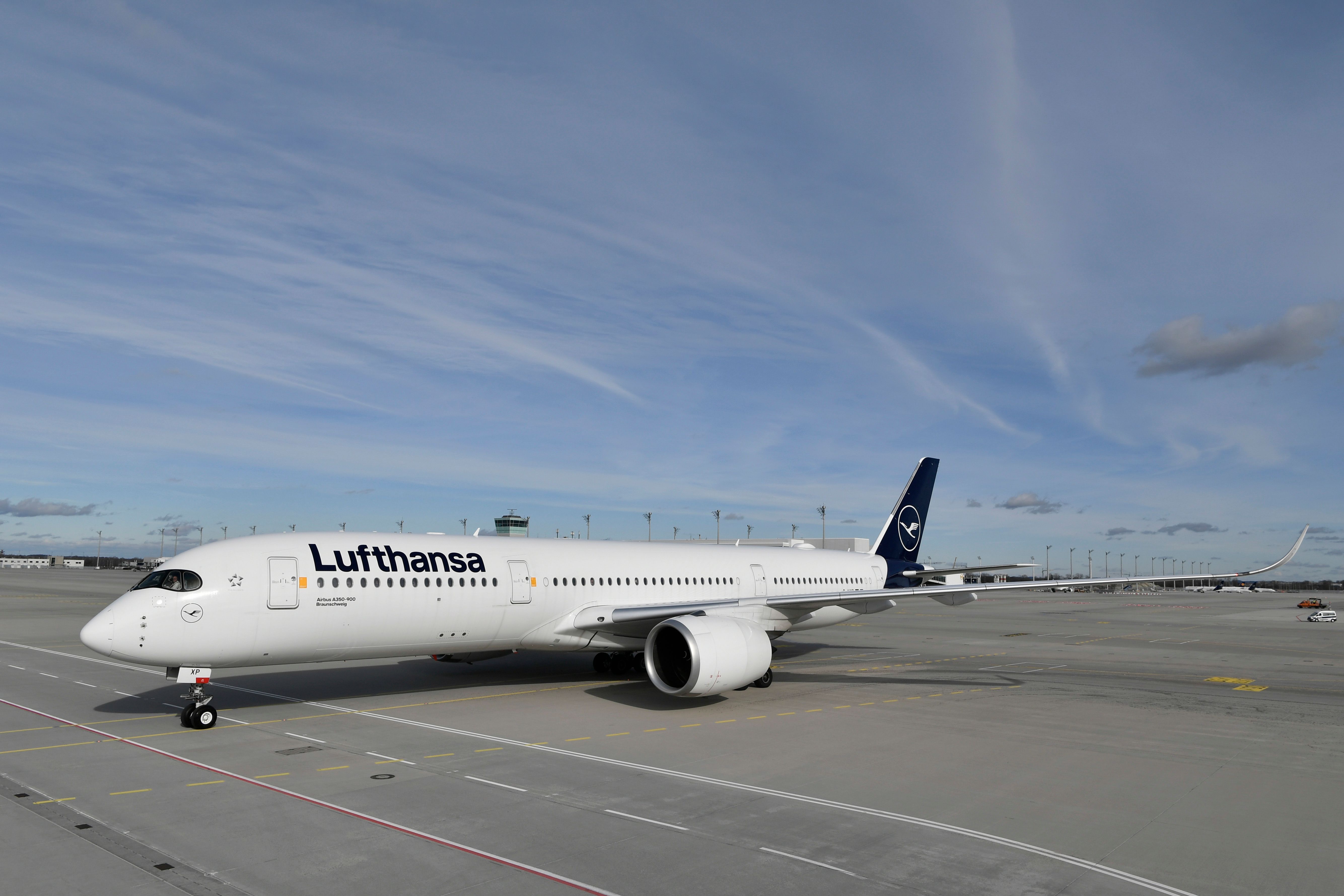

.jpeg)
